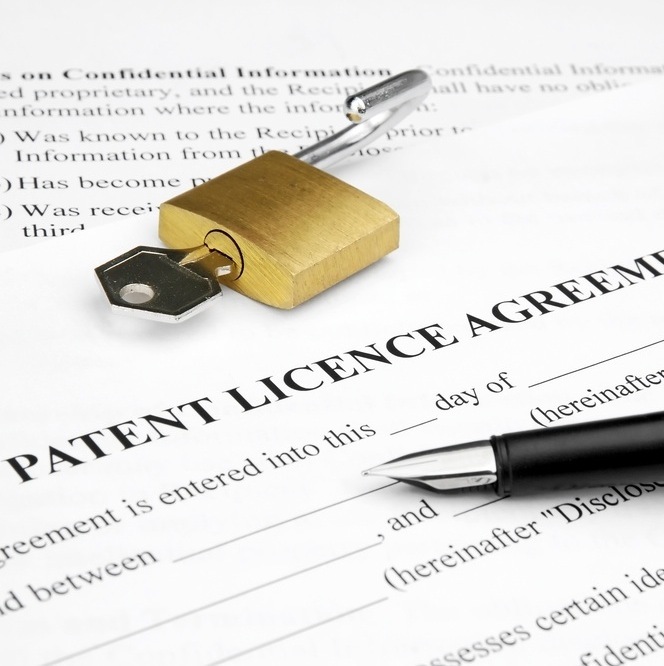For companies operating on the frontiers of science and technology, intellectual property (IP) is everything. ‘IP is the mortar among the bricks of our business,’ comments Bruce Girvan, director of IP at fuel cell provider Ceres Power.
Exclusive research conducted by Business XL, in association with patent mapping specialist Cambridge IP, reinforces how vital this area is for companies that survive on sustained brilliance. Looking at concerns listed on the Alternative Investment Market (AIM), our research shows that 2,331 patents have been filed by the top ten most patent-rich companies.
While it may be expected that many of these blue-sky ventures won’t be cash rich, some do have a heavy IP portfolio and cash in the bank (details of which are in the full report). GW Pharmaceuticals, which specialises in controlled drugs for prescription purposes, is a case in point. With a total of 283 patents, it has £18.4 million in the bank and a market cap of £44.6 million. Super conductor specialist ClearSpeed has 147 patents, £19.6 million on the balance sheet and a market cap of £10.3 million.
Valuable ideas
All of these companies regard IP as a vital commercial asset. At fuel cell specialist Ceres Power, originally a spin-out from Imperial College, there are three core elements to its IP strategy: protection, exploitation and defence.
Girvan explains that the company files patents, trademarks and designs regularly. However, he notes that if a competitor can’t break a product down and see how it’s been made, a patent won’t be filed.
‘With our patenting process, we use it to protect our crown jewels – our core technology – when it can be reverse engineered. If a competitor can’t see how we’ve done it, we generally do not patent that technology. That’s a trade secret.’
The costs of filing a patent are prohibitive, with an initial outlay of £2,500 just to get the ball rolling, and then there is the price paid for information going into the public domain. Girvan says the trick here is to ring-fence your IP by deciding on the strategic value of each filing: ‘Instead of having a sequence of patents, you might break it up and patent only, say, four out of ten possible patents. But a competitor won’t be able to infringe as those four patents all lead to and come from the same point of innovation.’
This approach is taken by another cleantech specialist, Energetix. CEO Adrian Hutchings refers to laying an IP ‘minefield’ around a product, noting that to do this effectively you need to patent a system as opposed to a basic component. ‘A system patent includes various components and that prevents someone from replicating the system,’ he notes.
Ben Goodger, global head of commercialisation at IP law firm Rouse, says the practical application is often underestimated when a filing is made. ‘A good patent is a very commercial, tactical thing. Conversely, a bad patent simply describes the technology without connecting it to the business.’
Time and money
That can be an expensive mistake. Girvan says that Ceres budgets £60,000 for the first five years of a patent’s life. This will include the price of registering in other countries, legal fees and additional costs, such as translating documents. James Hunter, FD of Proximagen, which specialises in drugs for neuro-degenerative diseases like Parkinson’s and Alzheimer’s, says one IP programme can cost around $500,000 (£288,000).
In fact, it can take years for a patent to be granted. That creates a real dilemma for a business as significant investment can be made without knowing the final decision of a particular patent office. Says Hunter: ‘You still carry a lot of risk as you wait for a patent to be granted. We won’t know if someone put in a similar patent the day before we did, and we may not find out for a couple of years. That means we could’ve been wasting our time.’
A solid set of IP assets will significantly strengthen your business and it should make you an attractive commercial proposition to an acquirer. If another company does infringe – and it operates in a country that belongs to the World Intellectual Property Organisation – Goodger says a well-written ‘cease and desist’ letter ‘usually gets a pretty good result’.
US-based fuel cell specialist IdaTech is looking to operate in Europe, South Africa and India. Chief engineer William Pledger says: ‘We look at where our competitors are and we may try to get patent protection outside the US. You try to get as much patent protection as you can – whether it’s simply for protection or as a potential bargaining chip.’
China isn’t on IdaTech’s list of countries to enter. ‘Even if you have patent protection in places like China, it doesn’t really help you. Or it’s extraordinarily expensive to try and get protection,’ observes Pledger.
Nevertheless, Asia may not be the IP hinterland that it’s sometimes made out to be. Goodger observes that IP can be defended in places like China, but it’s a case of choosing one of the main cities, such as Beijing. ‘If you go to the right courts in China, IP will be recognized, although it’s fair to say it’s not widely understood. So you need to go to the major commercial centres and then you can get a very fair result.’
On the attack
IP shouldn’t be seen as a purely defensive tool. Girvan explains: ‘The fact is that during the patenting process, you can alert an IP examiner to “prior art” that should be taken against an existing patent, and that examiner is bound to look into it.
‘So if I file a patent and someone else, at any time, has given a public presentation or produced a paper or some recordable media format to describe what my invention is, then I cannot technically file a patent as it’s already been disclosed.’
Goodger observes that licensing or even selling IP is an area companies should look into. ‘Licensing is fantastic as you may hang on to the asset. Especially in the current market, companies need to make an active effort to maximise the revenue opportunities from their IP portfolio as much as any other set of assets that they own.
‘There are brokers out there who can purchase patents you don’t want. A lot of companies now need to focus on selling patents, rather than letting them lapse.’
The biggest danger for a company that has no legal defence is its employees. Girvan says: ‘People are our biggest strength and biggest weakness and any business that doesn’t realise this is foolish.’
Measures can be taken to protect a company, continues Girvan, and this includes healthy remuneration and confidentiality clauses in a contract should an employee move on. But it doesn’t end there.
‘We’ve split our organisation into compartments, so no one person has the entire picture,’ he says. ‘We control where information is stored on our databases, so people can’t download and take away information. There are only two or three computers in this company where you can download information onto a memory stick or CD.’
In addition to this, controls are in place to avoid employees sending out commercially sensitive emails. It’s another tool in the effort to guard what’s vital for the longevity of the company, and IP figures as an intrinsic component of that strategy.
Goodger says: ‘Patents are incredibly powerful – if you get it right with patents, you have something very strong. It gives an absolute monopoly to you over anyone doing something similar. That can’t be underestimated.’






